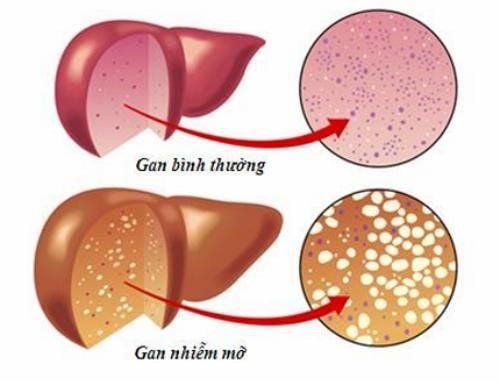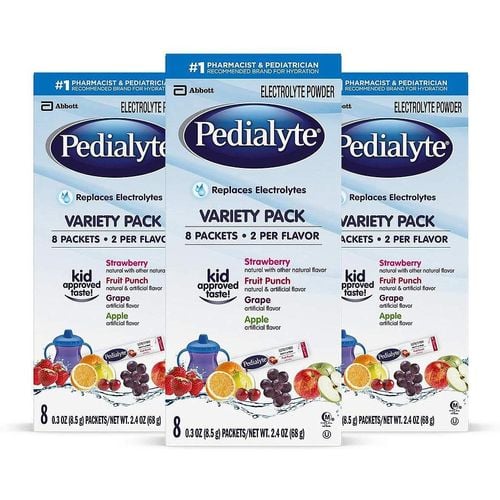Oxytetracycline is classified as a Tetracycline, a group of broad-spectrum antibiotics. The drug is often prescribed in the treatment of Gram-negative and Gram-positive infections after determining that the bacteria are still sensitive to Oxytetracycline.
1. What is Oxytetracycline?
Like other tetracyclines, oxytetracycline has a bacteriostatic effect.
Mechanism of action: Oxytetracycline reversibly binds to the 30S and 50S ribosomal subunits, disrupting the protein synthesis process of bacterial cells, making it impossible for bacteria to grow and multiply, and gradually die out.
Oxytetracycline is a broad-spectrum antibiotic, effective against many species of aerobic and anaerobic Gram-positive and Gram-negative bacteria, Mycoplasma, Rickettsia, and Chlamydia.
Recently, Oxytetracycline has also been used in the treatment of acne caused by Propionibacterium acnes.
Oxytetracycline and Polymyxin B combination ointment is more effective in treating Pseudomonas aeruginosa.
Dosage form and content of Oxytetracycline
Oxytetracycline can be prepared alone in capsule form or combination form as intramuscular injection, or ointment.
Capsule: 250mg Oxytetracycline.
- Injection (intramuscular injection): Hydrochloride form with lidocaine 2%, formulated as in vials of 100 mg/ 2ml, 250mg/ 2ml, 500mg/ 10ml.
- Ointment: Oxytetracycline 30mg, Polymyxin B 10000 IU/ 1 gram;
- Oxytetracycline 5mg, Polymyxin B 10000 IU/ 1 gram, Hydrocortisone 15mg.
2. Indications and contraindications of Oxytetracycline
2.1. Indications
Currently, drug resistance of bacteria is increasing, so the use of Oxytetracycline is limited in the treatment of infections caused by common Gram-negative and Gram-positive bacteria. Use Oxytetracycline in the treatment of infections when bacteria are still sensitive to Oxytetracycline.
- Oxytetracycline is indicated in the treatment of infections caused by Mycoplasma in the genital and urinary tract; Rickettsia (including Q fever); Chlamydia and Brucella diseases.
- Non-specific respiratory and urinary tract infections, ear and eye infections. Oxytetracycline should only be used when the patient cannot use Penicillin or other antibiotics due to allergies, and the bacteria causing the disease are still sensitive to Oxytetracycline.
- Cholera and plague.
- Acne and rosacea.
Combination ointment of Oxytetracycline and Polymyxin B is indicated in the treatment of wounds and skin infections, and pyoderma diseases such as impetigo.
Oxytetracycline, Polymyxin B, and Hydrocortisone combination ointment are used to treat superficial infections of the eyes such as allergic conjunctivitis, blepharitis, and of the ears such as otitis externa.
2.2. Contraindications
- Hypersensitivity to Tetracycline antibiotics.
- Esophageal stricture, obstruction in the digestive tract.
- Children under 8 years of age (if taken orally).
- Renal failure.
- Liver failure.
- Lupus erythematosus.
- Pregnant and lactating women.
- Porphyrin metabolism disorders.
- Patients being treated with vitamin A or retinoids.
3. How to use Oxytetracycline
Oxytetracycline is taken orally. If the patient cannot take it orally, it can be injected intramuscularly. However, it is necessary to switch to oral use as soon as possible.
Intramuscular injection of Oxytetracycline can cause pain at the usual dose and the drug concentration in the serum is lower than when taken orally. To reduce pain, it is recommended to inject deeply into a relatively large muscle mass and change the injection site.
Food and milk reduce the absorption of Oxytetracycline through the digestive tract, so the drug should be taken 1 hour before or 2 hours after meals.
3.1. Dosage of Oxytetracycline
Adults:
- Common oral dose: 250 - 500mg/time, every 6 hours. Maximum dose 4g/day.
- Intramuscular injection: 100mg/time, every 8 hours. Or 150mg/time, every 12 hours. Or 250mg/time x 1 time/day. Maximum injection dose 500mg/day.
Children 8 years and older:
- Oral: 6.25 - 12.5mg/kg body weight/time, every 6 hours.
- Intramuscular injection: 5mg - 8.3mg/kg body weight/time, every 8 hours. Or 7.5mg - 12.5mg/kg body weight, every 12 hours. Maximum intramuscular injection dose 250mg/day.
Dosage for some special cases:
- Brucella infection: 500mg/time orally, every 6 hours, for 3 weeks. Combined with Streptomycin intramuscular injection 1g/time, every 12 hours in the first week, once a day in the second week.
- Uncomplicated gonorrhea: 500mg/time orally, every 6 hours. Maximum total dose 9g.
- Syphilis: take 500mg/time, every 6 hours. For early syphilis, use the drug for 15 days; for late syphilis: Use for 30 days.
- Acne: take 250 - 500mg/time x 2 - 4 times/day, depending on the condition and progression of the disease. Treatment is indicated for 6 - 8 weeks. It is necessary to monitor the progression and change the treatment regimen if the disease does not progress well.
The mechanism of action of antibiotics in the Tetracycline group is bacteriostatic, so the treatment period must be long enough to ensure that the bacteria die after a period of not being able to reproduce, meaning that the infection does not recur.
In the case of simple acute infection: The treatment period is usually 10 days or at least 3 days after the clinical symptoms have disappeared; fever: 7 - 14 days after the fever has disappeared; acne: 6 - 8 weeks. If the condition does not improve, it is necessary to change to another appropriate treatment regimen.
3.2. Oxytetracycline Overdose and Treatment
Symptoms of Oxytetracycline overdose include anorexia, nausea, and diarrhea. Treatment of overdose includes limiting drug absorption in the gastrointestinal tract and supportive treatment.
4. Some precautions when using Oxytetracycline
Oxytetracycline can cause increased growth of non-susceptible microorganisms, including fungi. In case of superinfection, Oxytetracycline must be discontinued, and other appropriate treatments used.
To avoid esophageal irritation, Oxytetracycline should be taken with enough water in an upright position. In addition, the patient should not lie down immediately after taking the drug and should not take the drug before going to bed. The drug is not indicated for patients with esophageal obstruction.
Oxytetracycline can cause skeletal retardation and reduced bone growth in young children. Oxytetracycline accumulates in developing bones and enamel, and use during tooth development causes enamel hypoplasia and discoloration of teeth to yellow-gray or brown.
Special care should be taken when using Oxytetracycline for the elderly.
Photosensitivity reactions may occur in sensitive patients. Patients should be warned to avoid direct exposure to light, and to stop using the drug if signs of skin discomfort appear.
Discontinue Oxytetracycline if symptoms of benign intracranial hypertension such as headache and visual disturbances appear.
Oxytetracycline reduces prothrombin activity in plasma, so the dose of anticoagulants should be reduced if used concurrently.
High doses of Oxytetracycline are associated with fatty liver syndrome and pancreatitis.
Pregnant women: Oxytetracycline is not indicated for systemic use in pregnant women during the second half of pregnancy. Oxytetracycline may cause delayed skeletal development and bone growth, enamel hypoplasia, and tooth discoloration in the fetus.
Breastfeeding women: Oxytetracycline is excreted in breast milk, so a decision should be made whether to discontinue the use of Oxytetracycline during breastfeeding or to discontinue breastfeeding while taking this medication.
5. Side effects when using Oxytetracycline
Undesirable effects when using Oxytetracycline are usually in the digestive tract and are dose-dependent. This effect is most common when used orally, but can also occur when used intramuscularly.
- Digestive: Most commonly, nausea, vomiting, diarrhea, loss of appetite, and abdominal discomfort. Esophageal ulcers may occur.
- Permanent tooth discoloration to dark brown or yellow, enamel hypoplasia (in children).
- Central nervous system: Increased intracranial pressure, pseudotumor cerebri, bulging fontanelle in children.
- Skin: Itching, skin reactions, exfoliative dermatitis, photosensitivity.
- Diabetes insipidus.
- At the injection site: Thrombophlebitis.
- Other side effects: Hypersensitivity or anaphylactic reactions, secondary infections, pigmentation of fingernails and toenails.
6. Oxytetracycline Interactions with Other Drugs
- Antacids containing aluminum, calcium, zinc, or magnesium reduce the absorption of Oxytetracycline.
- Barbiturates, Phenytoin, and Carbamazepine: These drugs reduce the half-life of Oxytetracycline.
- Warfarin: Oxytetracycline may increase the effect of this drug.
- Since bacteriostatic drugs may interfere with the bactericidal action of Penicillin, Oxytetracycline should be avoided in combination with Penicillin.
- Oxytetracycline may enhance the hypoglycaemic effect of insulin and sulphonylureas in diabetic patients.
- Benign intracranial hypertension has been reported following concomitant use of Tetracycline and vitamin A or retinoids and is therefore contraindicated.
Please dial HOTLINE for more information or register for an appointment HERE. Download MyVinmec app to make appointments faster and to manage your bookings easily.













